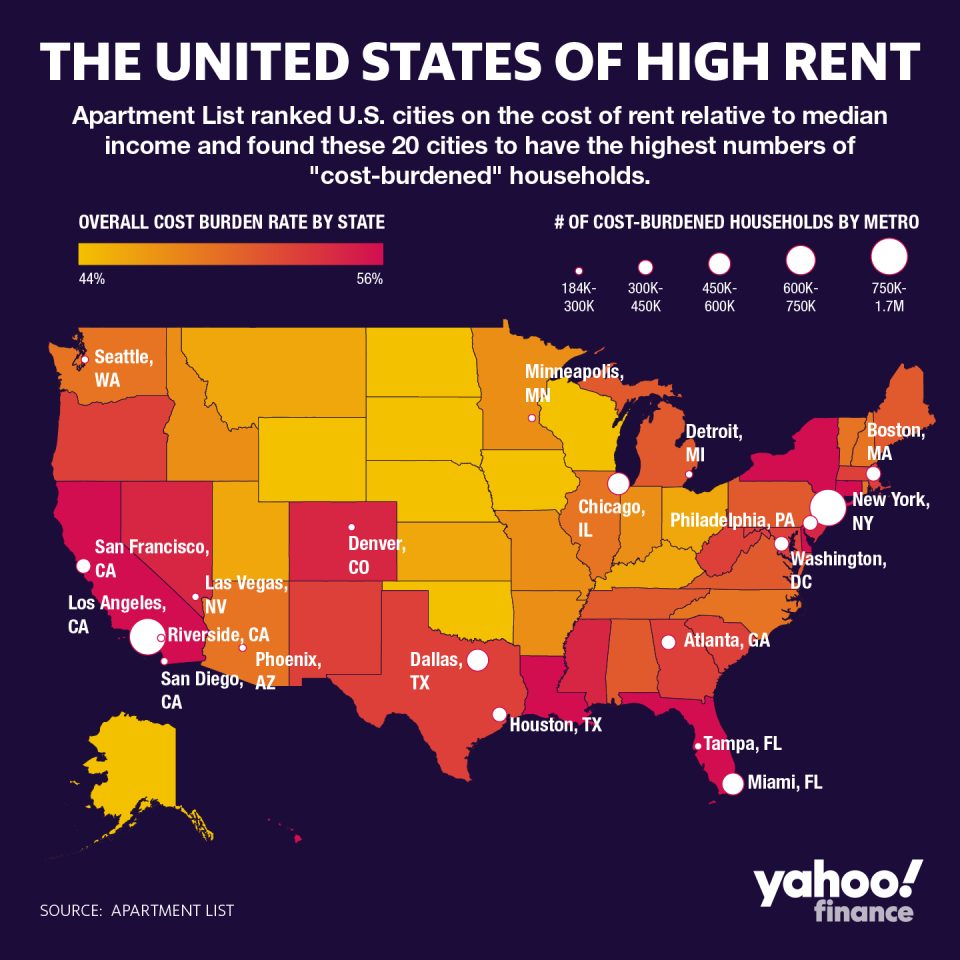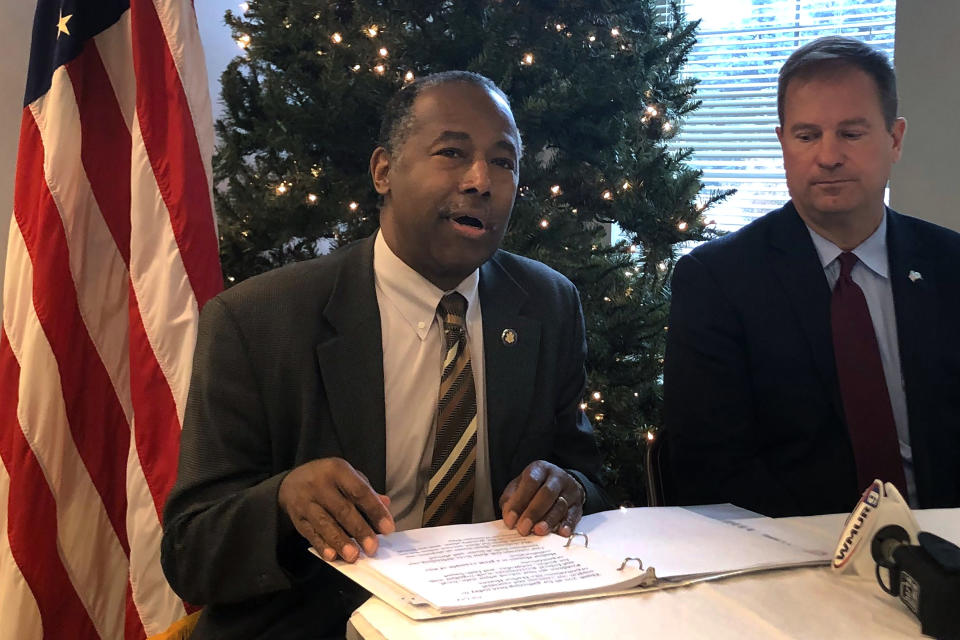New Trump housing rule to increase discrimination against minorities, say advocates
The Trump administration announced on Jan. 14 that it would administer a completely new housing rule that removes the federal requirement to address and prevent housing discrimination, and instead places housing control in the hands of local municipalities and officials.
Housing advocates say the new regulation will only increase housing insecurity and discrimination against minorities as it effectively rolls back the Obama-era Affirmatively Furthering Fair Housing (AFFH) rule to actively prevent housing discrimination.

In its new rule, the Department of Housing and Urban Development (HUD) stated that the previous Obama-era regulations were “overly burdensome to both HUD and grantees and are ineffective in helping program participants meet their reporting obligations for multiple reasons.”
What is AFFH?
The 1968 Fair Housing Act protects people from discrimination when they are buying a home, seeking a mortgage or finding a place to rent. Among the protected classes are race, sexual orientation, religion, disability, and ethnic origin.
In 2015, the Obama administration’s AFFH rule mandated that cities and towns receiving federal funding don’t just prevent discrimination, but also actively examine if their housing practices contained racial bias and design a plan to address it.
Since Trump took office, his administration has delayed the implementation of AFFH, and eliminated a computer program that was supposed to be used by local governments to submit their data.
“Ben Carson mentioned when he was running that this was something he wanted to eliminate,” said Deirdre Swesnick from the National Housing Law Project (NHLP), a housing advocacy group. (Ben Carson described AFFH as a “social-engineering scheme in a Washington Times op-ed in 2015).
Describing the AFFH as the “second” part of the Fair Housing Act that fights segregation (the first being to stop discrimination), Swesnick says the new rule doesn’t address racial segregation.
“We don’t consider it a fair housing rule,” she explained. “This isn’t an affordable housing rule. This is deregulation. It’s couched in fair housing terms, but they have really dropped that.”
The new AFFH
The administration writes that, “HUD is proposing a new process to evaluate each jurisdiction's efforts to AFFH that not only allows HUD to enforce civil rights requirements effectively but also empowers individual jurisdictions to develop new approaches to AFFH and share with their peer jurisdictions what has worked and what has not.”
Trump’s new AFFH rule, Swesnick says, eliminates the requirement to analyze fair housing efforts in each community to examine if bias exists and create proposals to eliminate it. Instead, she says, the government lists 16 barriers to fair housing and allows each jurisdiction to summarily pick three barriers that might exist in their community from the list.
“Included in there are unnecessary labor and environmental standards,” she says. She added that “rent control” is considered by the Trump administration to be a barrier to fair housing.

The National Low Income Housing Coalition (NLIHC) echoes the NHLP, writing that the new law “isn’t a fair housing rule.”
“For the AFFH certification,” the NLIHC writes, “HUD would require a jurisdiction to identify three goals and describe how addressing those goals would address fair housing. The proposed rule would not, however, require such a description if a jurisdiction chose its goals from a list of 16 “obstacles” that HUD considers inherent barriers to fair housing choice.”
The effect, the NLIHC writes, is that communities are pushed to pick one of the 16 “obstacles” to fair housing — 13 of which, the NLIHC says “have nothing to do with fair housing.”
But HUD says the old rule “was designed to steer affordable housing into ‘high opportunity’ areas, but ironically, was suffocating investment in some distressed neighborhoods that need investment the most.”
“In some communities, low-income areas were actually redlined out of affordable housing development plans, literally requiring that federal resources be redirected to high-income areas,” a senior HUD official told Yahoo Finance.
Swesnick says, however, that the new rule barely had time to be implemented before it was paused by the Trump administration.
Many jurisdictions hadn’t even gone through the processes mandated by the Obama-era AFFH, she says.
Increasing discrimination
The effect, advocates say, is the potential that housing insecurity and discrimination will increase.
“By rolling back the AFFH rule, the Trump administration is actively increasing housing insecurity and discrimination while further exacerbating the housing crisis taking place in communities nationwide,” Alexandra Cawthorne Gaines, vice president of the Poverty to Prosperity Program at the Center for American Progress, says.
Swesnick says there is a “real risk” that the proposal from HUD could increase homelessness in addition to rising discrimination, saying it would “release jurisdictions from having to examine whether their federal funding is being used to perpetuate discrimination and segregation.”
“Public housing authorities no longer have to do analysis of their programs,” she says, noting that public housing authorities are the largest landlords in the United States. “They provide really critical affordable housing.”

And according to HUD, public housing tenants are some of the most vulnerable populations in the country, writing that public housing renters “are very poor” in a 1995 publication. According to HUD, in 2013, median household income for all renters was three times that of those in public housing.
Black households represent 43.5% of HUD-assisted units and 46.8% of tenants in public housing, according to the 2017 renter characteristics report. White households made up 48.5% and 46%, respectively. However, HUD notes, black households only make up 21% of all renters, compared to 70.4% of white households. Hud-assisted rentals receive assistance from the government to pay rent, while public housing offers low-income rentals at prices that tenants can afford.
HUD has pushed back against critics, telling Yahoo Finance the idea that the new AFFH will increase discrimination and housing insecurity “couldn’t be farther from the truth of what we are trying to do here.” Instead, the agency says it is trying to “increase housing choice, because the more affordable housing options available, the more flexibility people have to live wherever they choose. Skyrocketing housing prices and regulatory barriers have shrunk who can choose where they live, which is felt the most in protected classes which disproportionately populate lower-income classes.”
Kristin Myers is a reporter at Yahoo Finance. Follow her on Twitter.
Read more:
Democrats receive record number of campaign contributions in 2019
Iran is ‘in a no-win situation’: expert
United States not prepared for cyberwar with Iran
Trump's impeachment has been cheaper than Clinton's
Trump re-election campaign bags $5 million on impeachment day
Read the latest financial and business news from Yahoo Finance
Follow Yahoo Finance on Twitter, Facebook, Instagram, Flipboard, LinkedIn, YouTube, and reddit.

